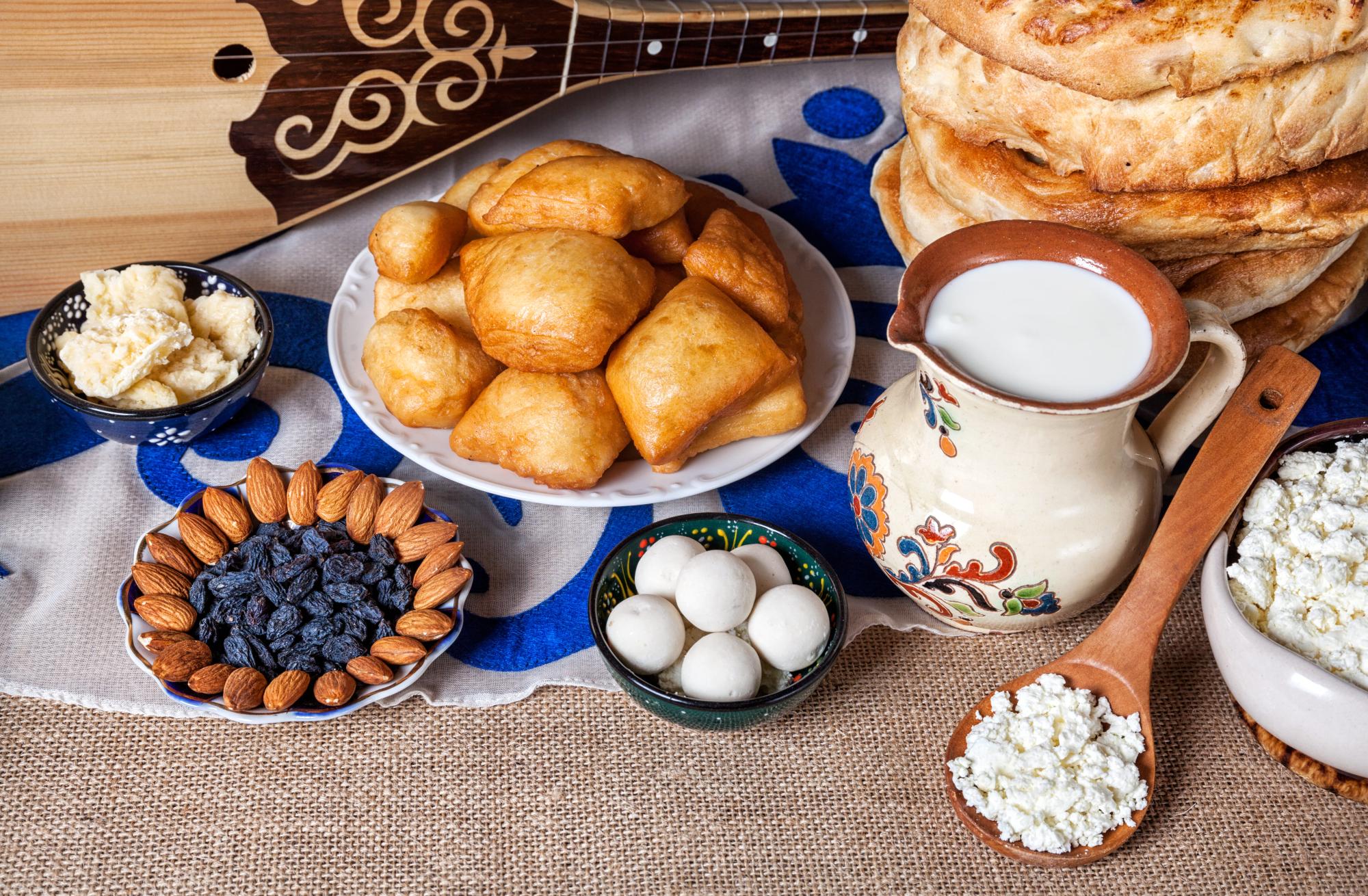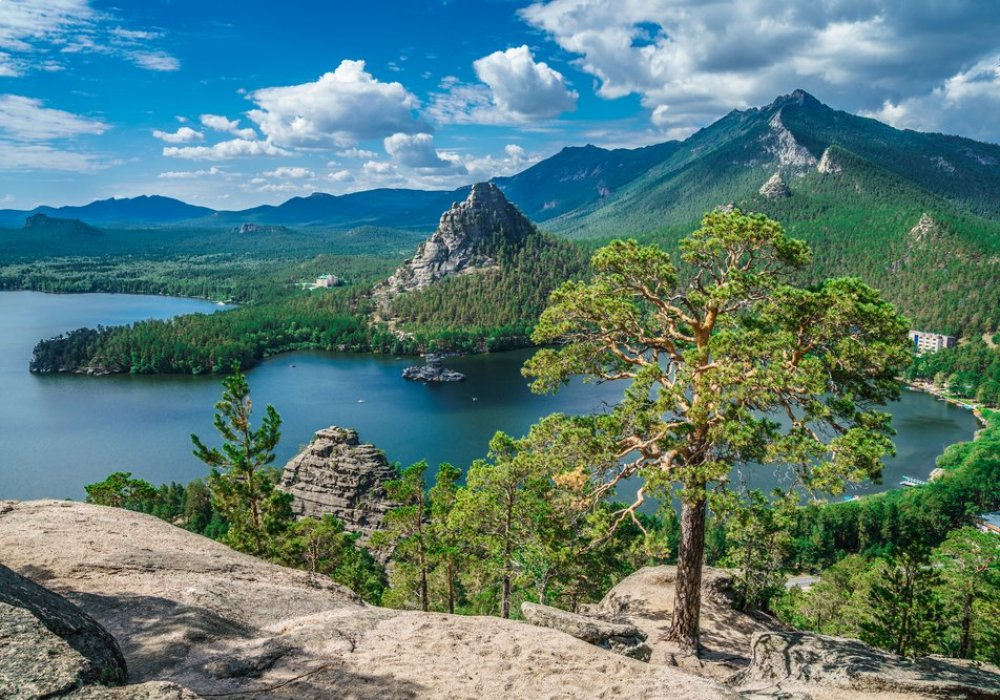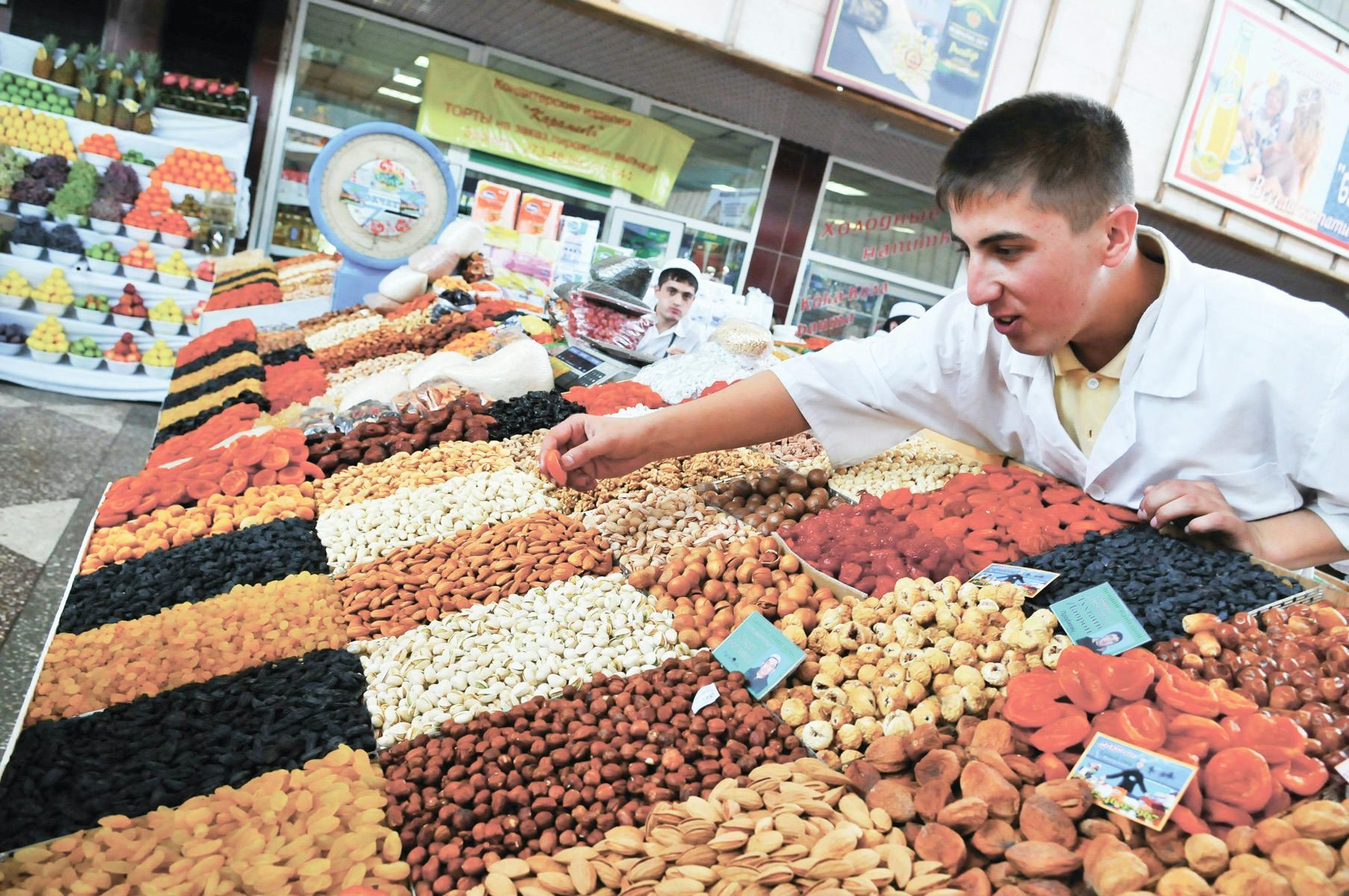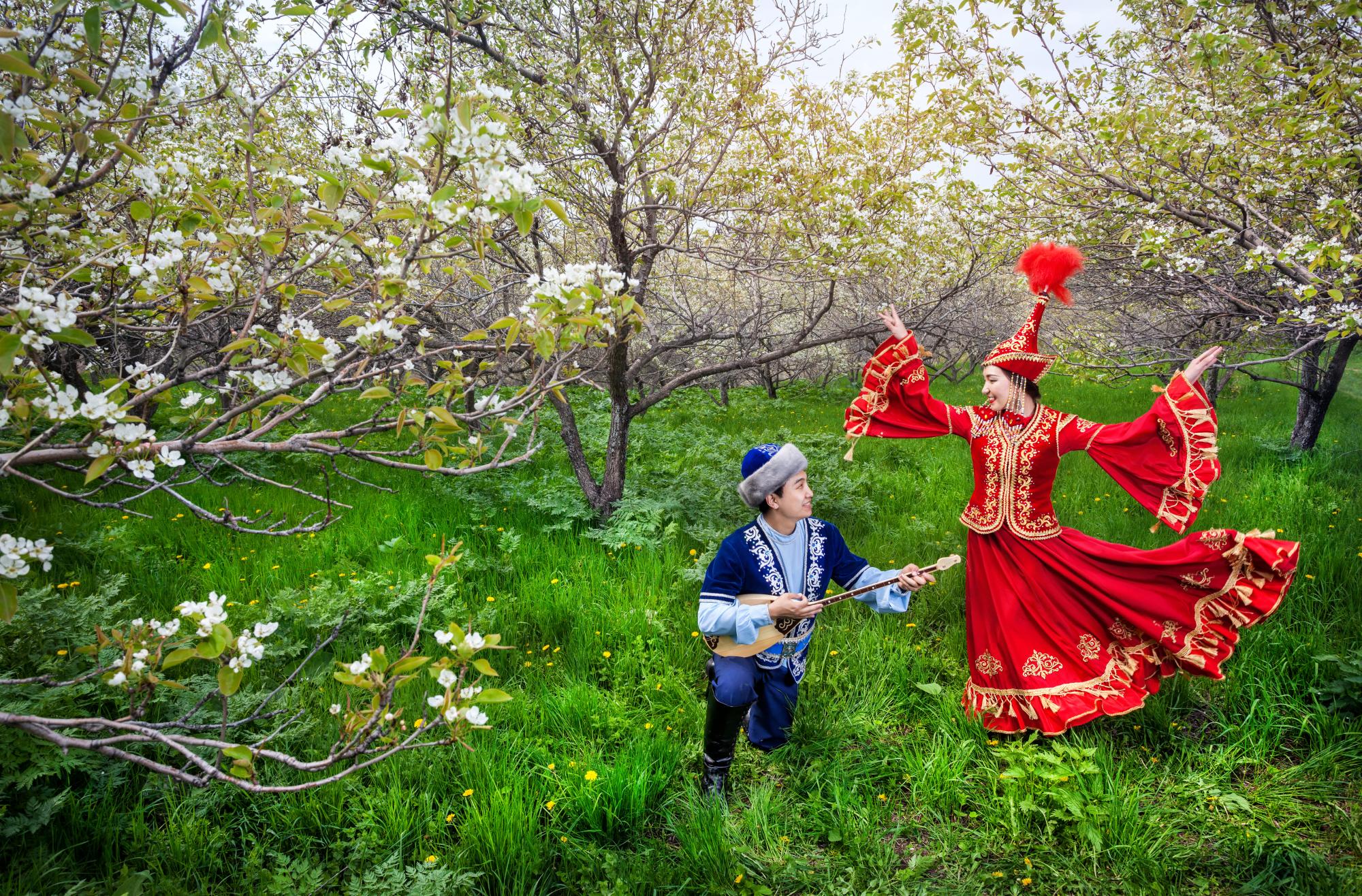
Сentral Asia is a true gastronomic paradise where every meal becomes a journey through centuries of culture. Between endless steppes, verdant oases, and towering mountains, nomadic and settled traditions have woven a single culinary tapestry. We invite you to explore this world of flavors—from a hearty bowl of Шорпа to sweet Чак‑Чак, from aromatic Плов to tender Бешбармак—each bite tells the story of boundless plains, bustling bazaars, and high‑mountain trails.
Mornings in Central Asia often begin with a clear, fragrant bowl of Шорпа (a meat broth made with lamb or beef, generously seasoned with fresh кинза and slices of морковь). Even if you’ve just arrived from a long journey, a bowl of hot Шорпа will replenish your strength and recall ancient caravans pausing here at springs and woodlands before continuing their expeditions.
Alongside this broth, you’ll often find a Лепёшка —a round flatbread made from wheat flour, traditionally baked in a clay тандыр or roasted over an open flame. Crispy at the edges and soft inside, a Лепёшка soaks up every drop of flavorful broth. Paired with thick Сузма (strained yogurt mixed with fresh herbs), it becomes a simple yet satisfying breakfast—perfect after an overnight journey or a stroll through a local bazaar.
By midday, the spotlight turns to heartier dishes. Плов, often called the king of Central Asian cuisine, is made from long‑grain rice fried in курдюк (lamb fat) together with onions, морковь, and sometimes barberries or raisins. It's cooked slowly and patiently so that every grain absorbs the meat’s aromas and spices. When the golden crust forms at the bottom of the kazan (cauldron) and wisps of steam rise, you know it’s time to feast. Плов is served generously—often right from the kazan itself—so each guest can pick the most tender pieces of lamb, and at the end, savor the crispy “қозық,” that crisp layer of rice at the bottom, with its rich, nutty flavor.
If you enjoy dumplings, try Манты — large parcels of thin dough filled with minced lamb or beef and chopped onions. Steamed until tender, Манты release a rich, savory broth when cut, and that flavorful juice collects in your bowl. Many like to dip Манты in a side of cool Айран or Кымыз (fermented dairy drinks) to accentuate the juicy filling.
For something more traditionally “hearty,” you can’t miss Бешбармак. In this nomadic classic, thin slices of boiled meat (lamb, beef, or horse) are arranged atop wide ribbons of homemade noodles, then drenched in a fragrant meat broth. The dish’s name—literally “five fingers”—harks back to a time when it was eaten by hand; today, restaurants present Бешбармак elegantly, but it still carries that warm, unhurried sense of comfort. Each bite of Бешбармак evokes both the vastness and the coziness of the steppes.
Between main courses, you might sample Курдак — a skillet‑fried mix of meat chunks (lamb, beef, or a combination) with onions and potatoes, cooked in top‑notch lamb fat. Simple but incredibly satisfying, Курдак reflects centuries of necessity in harsh climates: nourishing, filling, and perfectly paired with fresh herbs or a warm Лепёшка.
No visit to Central Asia is complete without tasting Казы — smoked horsemeat sausage that used to be a nomadic specialty. Served thinly sliced and often chilled, each bite of Казы is a delicate yet smoky indulgence. Paired with a sip of Кумыс or Кымыз (fermented mare’s milk), you’ll experience a slightly tangy, fizzy refreshment that, like a strong cup of coffee, revitalizes you instantly—much as travelers once relied on it after long horseback rides.
If you have a sweet tooth, look for Чак‑Чак — crispy pieces of fried dough bound together with fragrant honey. Sometimes garnished with chopped nuts or dried fruits, Чак‑Чак graces festive tables and makes a delightful treat. Пахлава is another beloved sweet: layers of flaky dough soaked in honey or syrup, with fillings of walnuts or pistachios. Its sweet, nutty aroma lingers long after the last bite.
For a quick, tangy snack, try Курт — dense balls of dried yogurt that keep well for travel and add a refreshing sour note to any dish, whether stirred into a soup or nibbled on their own.
There are also Нон — large, round flatbreads baked in a clay тандыр until crispy at the edges and soft in the center. Found everywhere across the region, Нон is perfect for tearing by hand and dipping into savory stews or simply enjoying with a steaming cup of tea at day’s end.
Vegetarians and salad lovers will find plenty to enjoy as well: markets overflow with fresh tomatoes, sweet bell peppers, crisp cucumbers, carrots, and beets in season. Herbs like кинза, укроп, петрушка, and базилик bring vibrancy to cold appetizers, garnish soups, and brighten up hot dishes.
Finally, every Central Asian meal is crowned by a cup of strong black tea, often brewed in a traditional самовар or a карас. Served alongside Бешпармак‑десерт (a sweet adaptation of Бешбармак, where dough is filled with dried fruits and honey) or Пышмелбайыр (a flaky pie filled with rice pudding and honey), tea marks both the end of one feast and the promise of another.
Tips for Travelers
1. Visit the bazaars. Central Asian markets—like those in Алматы, Ташкент, Бишкек, or Душанбе—are the best place to see local produce: fragrant spices, plump dried fruits, freshly baked Лепёшка, and live cooking stalls.
2. Choose family‑run чайханы. These teahouses cook from home recipes: you’ll find genuine Плов, Манты, Лепёшки, and fermented drinks that you won’t get in tourist‑oriented restaurants.
3. Sample farm products. Along many routes, you’ll find small villages where villagers sell homemade cheeses, fresh yogurt, goat and sheep milk, and local honey.
4. Take your time. In nomadic hospitality, nobody hurries: a meal can stretch over several hours, accompanied by tea, toasts, and stories. Relax and savor every moment.
5. Be mindful of acclimatization. In the mountains and on the steppes, weather changes quickly. Start with lighter dishes (yogurt, fresh salads) and gradually move on to richer broths and meat stews.
Central Asian cuisine truly reveals itself through the palate: there are no generic “tourist” fast‑foods—only genuine generosity and soulful flavors. Each dish reflects a connection between people and nature: the strength of the steppes, the bounty of oases, the grandeur of mountains, and the whispers of desert winds. Embark on this gastronomic adventure, and you’ll discover that a real journey begins with the very first bite. Come for the flavors, and stay for the stories that every plate tells!
 Central Asia: A Journey Through Centuries and Civilizations
Central Asia: A Journey Through Centuries and Civilizations
Central Asia is more than just a point on the map—it is a true kaleidoscope of cultures, landscapes, and traditions. Here, you can feel the s...
Next 10 Reasons Why Kazakhstan Should Be on Your Travel Bucket List
10 Reasons Why Kazakhstan Should Be on Your Travel Bucket List
Kazakhstan is far more than endless steppes and horses, as many might assume. It's a land of ancient nomadic traditions, futuristic architectur...
Next Shopping Guide: From Bazaars to Designer Boutiques
Shopping Guide: From Bazaars to Designer Boutiques
Central Asia is a treasure trove of vibrant colors, aromas, and authentic goods. Here, street bazaars stand side by side with modern shopping malls...
Next Nauryz – A Spring Celebration of Renewal and Unity
Nauryz – A Spring Celebration of Renewal and Unity
Nauryz is one of the brightest and most significant holidays in Central Asia, symbolizing the renewal of nature, the beginning of the new year, and...
Next